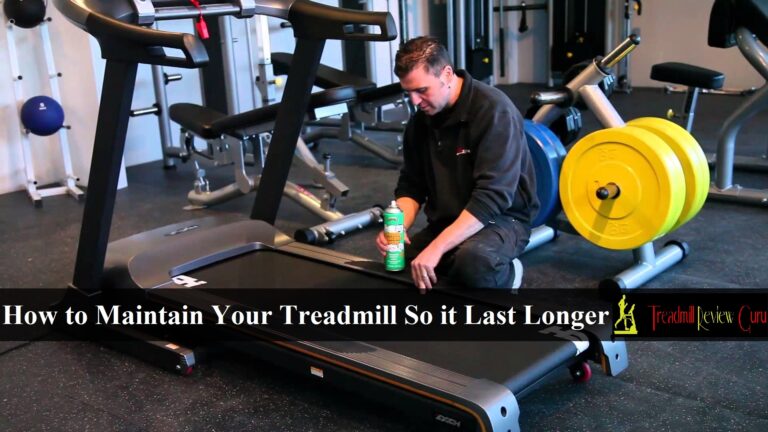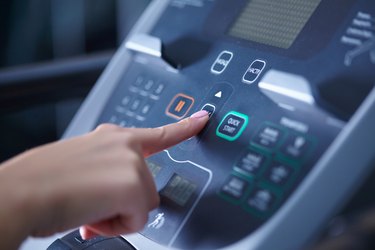10 Must-Know Treadmill Maintenance Tips to Keep Your Machine Running Like New!

Treadmill Maintenance Tips for Beginners
Introduction to Treadmill Maintenance Tips
Treadmills are an essential piece of fitness equipment, helping people achieve their health goals right from the comfort of their own homes. However, like all mechanical devices, they require regular maintenance to ensure they remain in optimal condition. Proper maintenance can help avoid breakdowns, improve performance, and extend the lifespan of your treadmill. Whether you’re a seasoned runner or just starting your fitness journey, learning the basics of treadmill upkeep is crucial to getting the most out of your equipment.
Importance of Regular Treadmill Maintenance
The importance of regular treadmill maintenance cannot be overstated. Proper upkeep ensures that your treadmill operates smoothly, allowing you to enjoy uninterrupted workouts. It also helps prevent costly repairs caused by neglecting small issues that could have been easily addressed with a bit of regular care. Routine maintenance prevents wear and tear on components like the belt, motor, and electronic systems, helping your treadmill serve you for years to come.
How Maintenance Affects Your Treadmill’s Lifespan
Just as regular oil changes keep your car running smoothly, routine maintenance keeps your treadmill performing at its best. When neglected, small problems—like a slipping belt or a dusty motor—can compound over time, leading to significant damage. By investing a little time each month in cleaning, tightening, and lubricating, you can greatly extend the life of your treadmill. With proper care, many treadmills can last over a decade.
Safety First: How to Maintain Your Treadmill Safely

Before diving into the maintenance tips, it’s crucial to keep safety in mind. Treadmills are powerful machines that involve moving parts, and ensuring your safety while maintaining your treadmill should be a top priority.
Power Off and Unplug
Always turn off and unplug your treadmill before performing any maintenance. This reduces the risk of electric shock or accidental activation of the treadmill while you’re working on it. Even if you’re just cleaning the machine, disconnecting the power ensures that you can handle parts like the belt and motor without risk.
Regular Inspections for Safe Operation
Check your treadmill regularly for loose or worn parts. Loose screws, bolts, or even a frayed belt can pose safety hazards if left unattended. Make it a habit to inspect your treadmill before every use. Look for signs of damage to the running surface, check the stability of the frame, and ensure the console is functioning correctly. These simple inspections can help avoid accidents and ensure your treadmill is safe to use.
Routine Treadmill Cleaning Tips

Regular cleaning is one of the easiest and most effective ways to maintain your treadmill. A clean treadmill will run more efficiently and last longer, as dirt and dust can cause wear and tear on moving parts.
Cleaning the Running Belt and Deck
Over time, dust, sweat, and dirt can accumulate on your treadmill’s running belt and deck. To clean the belt, use a soft cloth or microfiber towel to wipe down the surface. Be sure to clean both sides of the belt, as debris can build up on the underside as well. For a deeper clean, use a vacuum cleaner with a hose attachment to remove dirt from the deck and the area around the motor.
Keeping the Treadmill Motor Clean
The motor is the heart of your treadmill, and keeping it free from dust and debris is essential for smooth operation. Use a vacuum cleaner with a brush attachment to gently clean the motor area. Be sure to turn off and unplug the treadmill before attempting to clean this area, and avoid using water or liquids to clean the motor.
Lubrication: The Key to Smooth Operation
Lubricating your treadmill’s belt is an important maintenance task that helps reduce friction, ensuring smoother operation. Proper lubrication also helps prevent premature wear on the motor and other moving parts.
Why You Need to Lubricate Your Treadmill
Over time, friction from the running belt can cause wear on both the belt and the motor. Lubrication helps reduce this friction, allowing the treadmill to run more smoothly and efficiently. It also helps prevent the belt from slipping or becoming noisy during use. Regular lubrication can also extend the life of your treadmill, keeping it in top condition for longer.
How to Lubricate the Belt Correctly
To lubricate your treadmill’s belt, refer to your treadmill’s user manual for specific instructions on the type of lubricant required. Most treadmills use silicone-based lubricant. Apply a small amount of lubricant to the underside of the running belt, following the manufacturer’s recommendations. After applying the lubricant, manually move the belt a few times to distribute the lubricant evenly across the surface. Avoid over-lubricating, as this can lead to a slippery belt and may cause accidents.
Inspecting and Tightening Parts Regularly

Regularly inspecting and tightening various parts of your treadmill helps prevent mechanical issues and ensures your equipment stays in optimal working condition.
Checking the Running Belt Tension
The running belt should be tight enough to provide a smooth, controlled movement but not so tight that it strains the motor. To check the belt tension, lift the belt slightly in the middle and see if you can easily raise it 2-3 inches. If the belt is too loose or too tight, use the tension adjustment bolts on the side of the treadmill to adjust it to the correct tension.
Tightening the Bolts and Screws
Over time, vibrations from the treadmill can cause screws and bolts to loosen. Regularly inspect all bolts and screws on the treadmill, including those around the frame, motor, and console. Use a screwdriver to tighten any loose screws, which helps prevent rattling or damage to the machine.
Keeping Your Treadmill Level

An uneven treadmill can cause unnecessary wear on the machine, making it harder to use and potentially damaging components like the belt.
How to Level Your Treadmill for Stability
To ensure your treadmill is level, place a spirit level on the running deck. If the treadmill is not level, adjust the leveling feet, which are usually located at the back of the treadmill. Ensuring your treadmill is level helps provide a more stable and comfortable workout.
Effects of an Unleveled Treadmill
An unleveled treadmill can cause issues such as an uneven running surface or a belt that slips. These problems can make your workout uncomfortable and lead to more serious mechanical issues over time.
Power and Electronics: Tips for Long-Term Function

Proper care of the treadmill’s electronics ensures that your machine runs smoothly and prevents costly electrical repairs.
How to Check and Maintain the Electrical Components
Check the power cord and plug for any signs of wear or damage. If the power cord is frayed or has exposed wires, replace it immediately. Make sure the console is responsive and that the buttons work properly. If you notice any issues with the electronics, consult a professional for repairs.
Avoiding Power Surges and Their Impact
Power surges can damage your treadmill’s internal electronics, including the motor and control panel. Use a surge protector to prevent electrical damage. Always plug your treadmill directly into a grounded outlet and avoid overloading the circuit.
Troubleshooting Common Treadmill Issues

Even with regular maintenance, your treadmill may experience some issues. Knowing how to troubleshoot common problems can save you time and money.
Troubleshooting Slow Belt Movement
If your treadmill belt is moving slowly or inconsistently, check the belt tension and lubrication. Tightening the belt and applying lubricant can often resolve this issue. If the problem persists, it could be a sign of a more serious issue with the motor.
Resolving E1 and Other Error Codes
If your treadmill displays an error code like E1, refer to the user manual for troubleshooting instructions. Many error codes can be resolved by simply resetting the treadmill or checking for issues with the motor or control panel. For persistent problems, contact customer service or a technician.
When to Call a Professional for Repairs

Not all treadmill issues can be solved with basic maintenance. If you encounter persistent problems, it may be time to call in a professional.
Signs Your Treadmill Needs Professional Attention
If you notice strange noises, frequent error codes, or persistent issues that don’t improve with basic troubleshooting, it’s time to consult a professional technician. Professional maintenance can address issues with the motor, electronics, or frame that require specialized knowledge and tools.
Finding a Certified Treadmill Technician
When seeking professional help, ensure you hire a certified technician with experience in treadmill repairs. Check reviews and ratings to find a reputable service provider.
Essential Treadmill Accessories for Better Maintenance
Certain accessories can help you maintain your treadmill more easily and protect it from damage.
Essential Accessories for Treadmill Care
Consider investing in accessories like treadmill mats, which protect the floor and absorb vibration, and dust covers to keep the machine clean when not in use.
The Role of Covers and Mats in Protecting Your Treadmill
A treadmill mat helps protect your flooring from damage and reduces the amount of dust that accumulates underneath the machine. A cover keeps your treadmill clean and shielded from dust, pet hair, and moisture when not in use.
Frequently Asked Questions (FAQs)
How often should I lubricate my treadmill belt?
Lubricate the belt every 3-6 months, depending on how frequently you use your treadmill. More frequent use may require lubrication every 3 months.
Can I clean the motor on my treadmill myself?
Yes, you can clean the motor using a vacuum cleaner with a soft brush attachment. Just make sure the treadmill is unplugged first.
How do I know if my treadmill needs a professional repair?
If your treadmill shows persistent error codes, makes strange noises, or stops working entirely, it may require professional repair.
What should I do if my treadmill’s belt is slipping?
Check the belt tension and lubrication. Adjust or lubricate as needed to ensure proper belt movement.
How long do treadmills typically last with proper maintenance?
With proper care, a treadmill can last 10-15 years or more.
Are treadmill maintenance services worth the cost?
Yes, if you want to ensure your treadmill stays in top condition and avoid costly repairs down the road.
Conclusion
Maintaining your treadmill is an essential task for ensuring long-term performance, safety, and reliability. By following these essential treadmill maintenance tips for beginners, you can extend the lifespan of your machine, enhance your workout experience, and avoid costly repairs. Regular care, including cleaning, lubrication, and inspection, is key to keeping your treadmill in peak condition. With a little time and effort, your treadmill can serve you for years to come, helping you reach your fitness goals efficiently and safely.
Looking for the best treadmills for small spaces? Check out our Best Folding Treadmills Under $500 for Small Spaces guide!
Tags: treadmill, Treadmill Maintenance, Treadmill Maintenance Tips, treadmills

There are currently no comments available